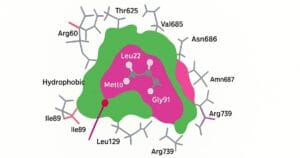
COMPETITIVE EXAM MCQs SERIES of ENVIRONMENTAL SCIENCE for UGC-NET/JRF, SLET, ARS, GATE, and other entrance tests – Environmental Governance by International Institutions: IPCC, UNEP and IGBP.
Syllabus Outline
- Evolution and concept of environmental governance at the global scale, emphasizing the roles and comparative functions of key institutions like the Intergovernmental Panel on Climate Change (IPCC), the United Nations Environment Programme (UNEP), and the International Geosphere-Biosphere Programme (IGBP).
- Structure, mandate, and contributions of the IPCC, including its Working Groups, Assessment Reports, emission scenarios (RCPs and SSPs), and its influence on global climate policy and negotiations such as the UNFCCC.
- UNEP’s role in international environmental law, key initiatives such as the GEO Reports, the Montevideo Programme, its involvement in multilateral environmental agreements, and its approach to sustainable development.
- The IGBP component focuses on its scientific contributions to Earth system research, major projects like IGAC, LOICZ, and PAGES, its framing of the Planetary Boundaries concept, and its transition to Future Earth.
- A critical and comparative analysis of the governance styles, scientific-policy interactions, institutional challenges, and representation issues across these bodies.
This quiz contains the concept-based most frequently asked 25 MCQs of “Environmental Governance by International Institutions: IPCC, UNEP and IGBP“. Each question has a single correct/most appropriate answer.
*****
1. Which IPCC working group focuses specifically on the physical science basis of climate change?
A) Working Group I
B) Working Group II
C) Working Group III
D) Task Force on Inventories
2. The IGBP was succeeded by which global research program to further Earth system science?
A) Earth Future Initiative
B) Future Earth
C) Global Change Alliance
D) Planetary Boundaries Project
3. One of the key innovations of the IGBP was the focus on:
A) Sectoral policy implementation
B) Regional disaster response
C) Coupled human-environment systems
D) Carbon taxation models
4. Which UNEP initiative focuses on economic growth decoupling from environmental degradation?
A) GEO Initiative
B) Green Economy Initiative
C) Climate Action Plan
D) Earth Charter
5. The concept of “Anthropocene” often discussed in IGBP-related literature signifies:
A) The end of climate change
B) The role of tectonic forces in global warming
C) Human-driven epoch in Earth’s history
D) Period of minimal ecological disruption
6. Which of the following best describes the IGBP’s structure?
A) A political negotiation platform
B) A UN subsidiary body
C) An interdisciplinary global research initiative
D) A private consortium
7. The IPCC was established in the year:
A) 1987
B) 1988
C) 1990
D) 1992
8. Which theme is central to the Future Earth program that succeeded IGBP?
A) Environmental justice
B) Scientific nationalism
C) Climate denialism
D) Anthropogenic resilience
9. The IPCC is a joint initiative of:
A) UNEP and WMO
B) UNEP and UNDP
C) UNESCO and FAO
D) WMO and WHO
10. The IGBP (International Geosphere-Biosphere Programme) was founded in which year?
A) 1984
B) 1986
C) 1987
D) 1990
11. IPCC’s methodology reports are intended to:
A) Enforce legal commitments
B) Develop scientific measurement standards
C) Harmonize greenhouse gas accounting
D) Prescribe national policy frameworks
12. In what way did IGBP contribute to global climate policy?
A) Direct involvement in treaty negotiations
B) Providing frameworks for understanding Earth system feedback
C) Setting carbon price mechanisms
D) Enforcing emissions reduction
13. What is the significance of UNEP’s GEO-6 report?
A) It was the first UNEP report
B) It introduced planetary boundaries
C) It warned of irreversible environmental damage
D) It was a joint report with the WHO
14. Which of the following is a key component of IGBP’s scientific framework?
I – Earth System Modelling
II – Fossil Fuel Trade Analysis
III – International Natural Resources Law
A) I only
B) I and II
C) I and III
D) I, II, and III
15. One significant conceptual shift introduced by the IGBP was:
A) Integrated study of biomes
B) Consideration of socio-economic drivers
C) Viewing Earth as a single interacting system
D) Fragmentation of climate into sectoral studies
16. Which IGBP-affiliated project developed the framework for integrating Earth system observations through long-term monitoring of critical zones?
A) Global Change and Terrestrial Ecosystems
B) Past Global Changes
C) International Global Atmospheric Chemistry
D) Global Land Project
17. The “safe operating space for humanity” is an idea associated with:
A) UNEP’s Green Economy report
B) IPCC’s AR5
C) IGBP’s Planetary Boundaries framework
D) Future Earth’s resilience protocol
18. The IPCC’s Working Group III primarily assesses:
I – Physical climate change evidence
II – Vulnerability and adaptation
III – Mitigation options and strategies
IV – International treaties
A) I only
B) III only
C) I and III
D) I, II, III and IV
19. A unique contribution of the IGBP was its promotion of the term:
A) Blue Economy
B) Earth System Governance
C) Planetary Health
D) The Great Acceleration
20. Which of the following best reflects the concept of “climate tipping elements” as used in IPCC and IGBP discourse?
A) Technologies that reverse global warming
B) Tipping policies for international carbon trading
C) Earth subsystems that trigger large-scale changes once thresholds are crossed
D) Sustainable thresholds for natural resource consumption
21. Which of the following IPCC concepts is most applicable in regional climate modelling?
A) CMIP6 ensemble modeling
B) SSP-RCP matrix
C) Global Circulation Models (GCMs)
D) Downscaling
22. The IPCC Special Report on Climate Change and Land (SRCCL) emphasized:
A) Urban infrastructure as the core emission source
B) The role of land degradation and desertification in climate change
C) Ocean currents as primary drivers of temperature shifts
D) Blockchain as a mitigation tool
23. The IGBP supported which scientific method integration into climate policy analysis?
A) Qualitative narrative analysis and GIS
B) Ecological footprint accounting and development
C) Systems modelling and simulation
D) Quantum climatology and GIS
24. The IPCC’s structure ensures scientific integrity by:
I – Allowing UNEP to review before release
II – A three-layer peer and expert review process
III – Restricting participation of low-income countries.
A) I only
B) I and II
C) II only
D) I, II and III
25. Which outcome arose from IGBP’s legacy and became a central research agenda of Future Earth?
A) Geoengineering for solar reflection
B) Integration of social-ecological resilience thinking
C) Market-based ecosystem trading
D) Pollution ecology exclusion
*****
Previous: Environmental Conventions and Agreements
Next: Environmental Statistical Approaches for Attributes and Variables
References
- Betsill, M. M., Hochstetler, K., & Stevis, D. (2020). International Environmental Politics. Oxford University Press.
- Biermann, F. (2014). Earth System Governance: World Politics in the Anthropocene. MIT Press.
- IPCC (2021). Sixth Assessment Report (AR6) – Climate Change 2021: The Physical Science Basis. Intergovernmental Panel on Climate Change.
- Pittock, A. B. (2009). Climate Change: The Science, Impacts and Solutions. CSIRO Publishing, 2nd Edition.
- UNEP (2019). Global Environment Outlook – GEO-6: Healthy Planet, Healthy People. Cambridge University Press.
- Lenton, T. (2016). Earth System Science: A Very Short Introduction. Oxford University Press.
- UNEP (2012). 21 Issues for the 21st Century: Results of the UNEP Foresight Process on Emerging Environmental Issues. United Nations Environment Programme.
- ICSU & ISSC (2015). Review of the International Geosphere-Biosphere Programme (IGBP). International Council for Science.

